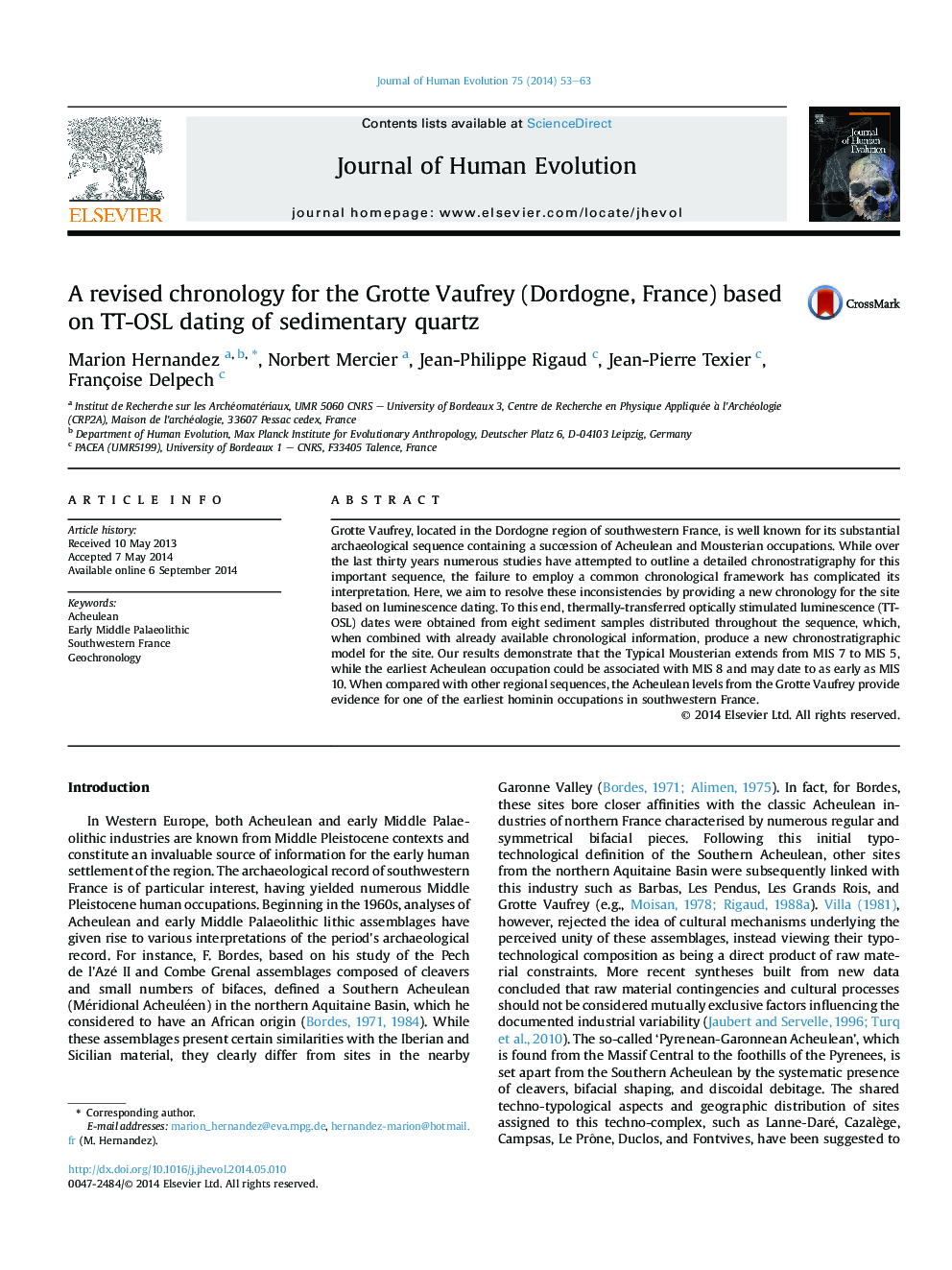| Article ID | Journal | Published Year | Pages | File Type |
|---|---|---|---|---|
| 6389203 | Journal of Human Evolution | 2014 | 11 Pages |
Abstract
Grotte Vaufrey, located in the Dordogne region of southwestern France, is well known for its substantial archaeological sequence containing a succession of Acheulean and Mousterian occupations. While over the last thirty years numerous studies have attempted to outline a detailed chronostratigraphy for this important sequence, the failure to employ a common chronological framework has complicated its interpretation. Here, we aim to resolve these inconsistencies by providing a new chronology for the site based on luminescence dating. To this end, thermally-transferred optically stimulated luminescence (TT-OSL) dates were obtained from eight sediment samples distributed throughout the sequence, which, when combined with already available chronological information, produce a new chronostratigraphic model for the site. Our results demonstrate that the Typical Mousterian extends from MIS 7 to MIS 5, while the earliest Acheulean occupation could be associated with MIS 8 and may date to as early as MIS 10. When compared with other regional sequences, the Acheulean levels from the Grotte Vaufrey provide evidence for one of the earliest hominin occupations in southwestern France.
Related Topics
Life Sciences
Agricultural and Biological Sciences
Ecology, Evolution, Behavior and Systematics
Authors
Marion Hernandez, Norbert Mercier, Jean-Philippe Rigaud, Jean-Pierre Texier, Françoise Delpech,
